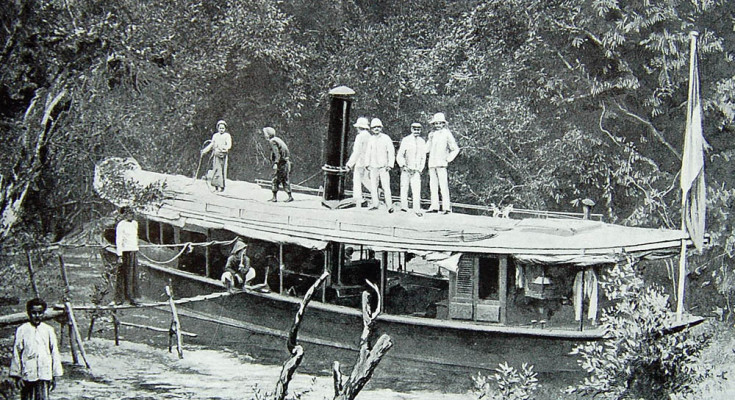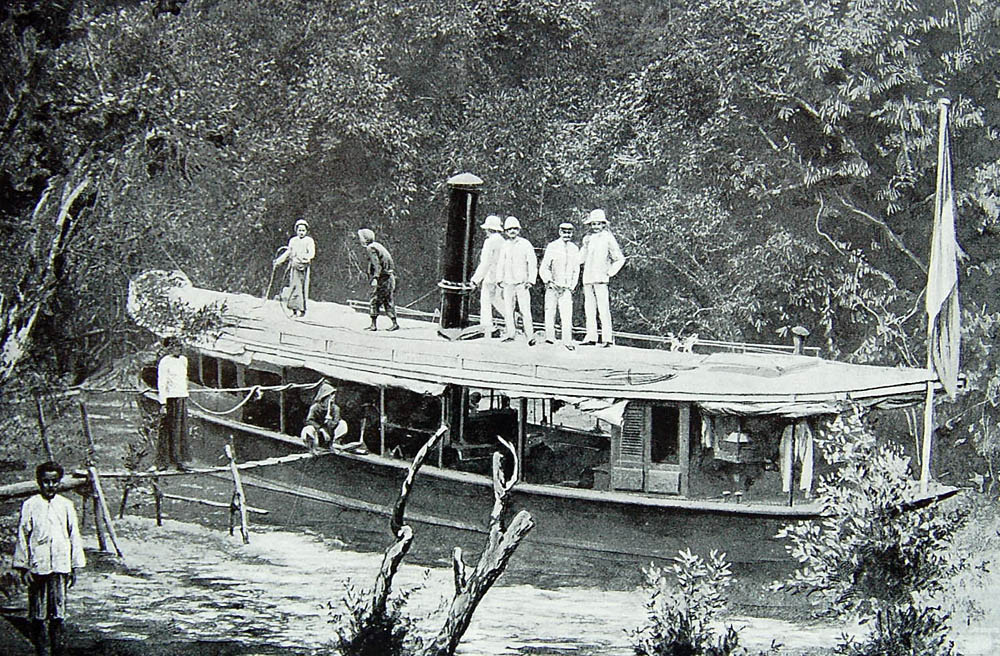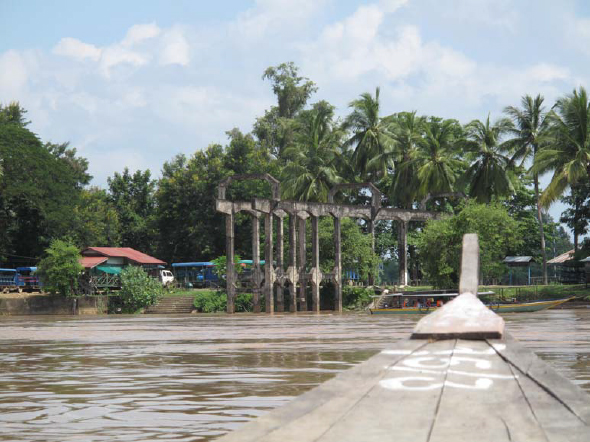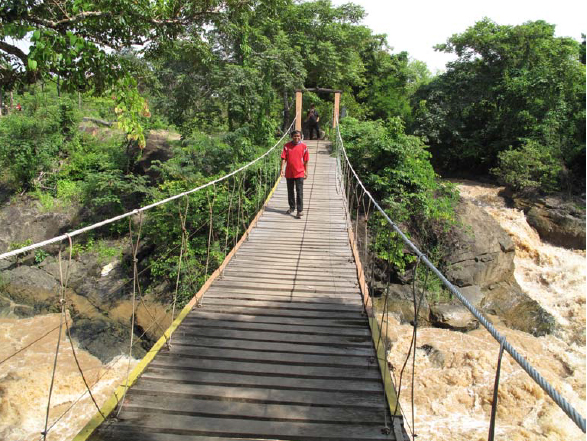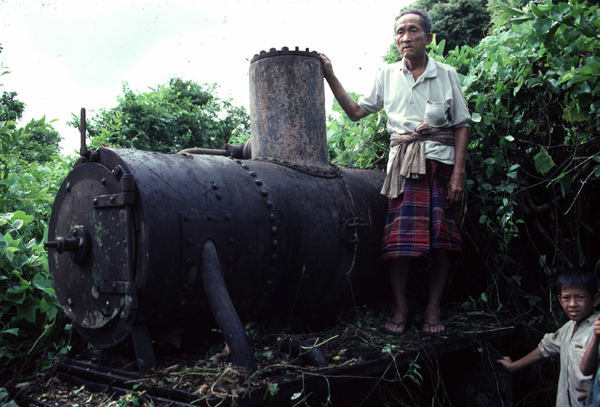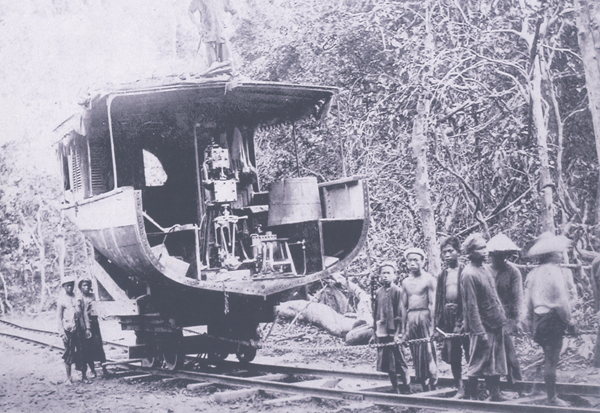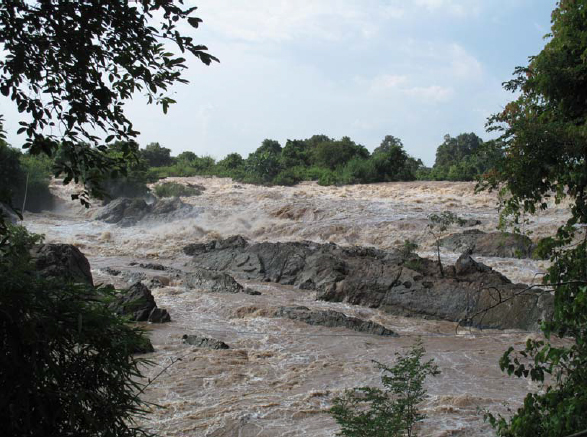By: Bernie Rosenbloom
In 1866, French Commander Ernest Doudart de Lagree and his first officer, Francis Garnier, departed Saigon with a crew of 20, and set sail to explore the Mekong. Their mission: steam to the fabled riches of China and firm up France’s Southeast Asian colonial foothold.
The raging rapids flanking Champasak’s Don Khone Island ended their boat ride, but not France’s colonial aspirations. They realised the strategic value of Don Khone, as it sidestepped the impassable torrent. Control Don Khone and Siphandon (4,000 Islands), and the Mekong is yours.
I realised that without Siphandon’s back story, my visit would boil down to pondering a pair of 100-year-old rusty locomotives, spotting Irrawaddy river dolphins, and watching water race over rocks. Surely thousands of islands offer more than that.
Once again, Rik Ponne and Jim Johnston at the Asian Development Bank’s Sustainable Tourism Development Project (STDP-Laos) opened their library and presented the plan to brighten Siphandon’s flash on travellers’ radar screens.
Lapping Don Khong
Don Khong deserves a permanent slot in Siphandon itineraries rather than “often overlooked” status, so the STDP brought its highlights to the fore.
After a 130-km motorbike ride on Route 13 south from Pakse, a sign, “Ban Hat Xay Khoun”, signalled a right turn to the Mekong ferry – bridge under construction – to Don Khong Island and Khong Town, today’s district capital and colonial France’s southern Lao administrative base.
We stopped at the STDP-supported Tourist Information Centre and Governor Kou Aphai’s French colonial house, built in 1935 and restored with STDP’s help into the Khong District Museum.
The visitor centre suggested a 10-stop, 30-km “Southern Loop”, which turned up a circus act in Ban Hinsiew. An older farmer scaled a limb-less sugar palm tree to extract fruit juice, which he steamed into sugar cakes called nam oy.
The Khmer-era rock carvings, scattered at the base of 14th-century Vat Phou Khao Keo’s stupa, caught me off guard, while the slow-pace surrounding our riverside restaurant seats in Meuang Saen kept everyone from saying, “Let’s go.”
Exploring Don Khone
About 14 km further down Route 13, the Nakasang Tourist Information Centre introduces Don Khone and Don Det in English and Lao.
We booked ferry passage to laidback Ban Khone, though some commuters stopped at the livelier Ban Hua Det, where the river bank boasted the remains of a 100-year-old pier, a hint of what lay ahead.
We arrived at Ban Khone, a cluster of guesthouses and riverside restaurants serving “Pa Phone”, a local fish specialty. Over dinner, we mapped out a tour weaving island life and nature into colonial France’s past.
At sunrise, we motored east to the 500-meter-long river barrier, built in 1903 to funnel teak down the Hou Ixam Channel to a diversion dam straddling Khone Pa Soy Rapids. We pondered the marvel from Pa Soy Island’s suspension bridge, before taking a path to fishermen crawling over the rapids on a bamboo matrix to check their traps. Fish-filled buckets revealed a good catch.
Back on the main trail, we ventured 2.5 km to Hang Khone Port on Don Khone’s southern tip. I expected the steam locomotive in a pavilion with panels presenting the railway’s tale, but got much more.
The concrete bones of an abandoned four-storey pier, from where gantry cranes once loaded freight, hung hauntingly over the Mekong. A rusted pulley system climbed up the bank to a now-silent motor room. A retired hillside reservoir quietly looked down on a ghost town that had thrived through the 1930s.
Fate propelled Hang Khone into the spotlight. French and Siamese tensions over the Mekong escalated into an 1893 naval blockade of Bangkok. The resulting treaty favoured France, who needed to move gunboats above Don Khone.
Mission leader, Naval Lt Georges Simon, constructed a 3-km railway to bypass Somphamit Falls (Li Phi), and transport vessels from Don Khone’s Marguerite Bay to Ban Khone Tai.
But, Lt Simon’s crew could not hoist the boats ashore, so he rerouted the rails to Hang Khone in 1894, and pulled the two-piece “Ham Luong” to an awaiting carriage and three-hour push to calm upriver waters.
I stood gawking at the relics, when someone snapped me from my daze. It was time to board a boat to spot the endangered Irrawaddy dolphins.
Though the small stretch of quiet, shallow, fish-filled waters off Hang Khone terminated upriver steamboat trips, it offers a rare habitat harbouring a handful of the Mekong’s 80-some “snub-fin dolphins”
We puttered to Cambodia, as the swelled rainy-season river sends dolphins to the western banks. Eyes scanned the surface near a shrubby island, and as if on cue, the dolphins’ bulging foreheads and blue-gray bodies broke the surface, as they lazily came up for air.
The view of the enormous skeletal pier interrupting Hang Khone’s greenery on our return conjured images of Titanic-era tourists and cargo transferring to the shuttle train and ships bound for Savannakhet, Vientiane, and Luang Prabang.
Our route continued to Somphamit Waterfalls, the boulder-filled, white-water thorn in colonial France’s side, and stopped to see Khmer-era relics at Vat Khone Tai.
Ban Khone Tai provided another history lesson. In 1910, along with Hang Khone upgrades, the French built the still-viable 13-arch bridge across Hou Béhanzin to Don Det, extended the rails to Ban Det, and constructed the pier we passed the day before. A Ban Khone Tai pavilion shelters a 1929 locomotive and panels revealing Don Kone’s past in English and Lao.
Our Siphandon excursion ended at the Khone Phapheng Waterfalls. This hydro-wonder explodes over a wide fault line like an unending tsunami, rumbling over massive boulder-filled drop-offs with a foaming, ground-shaking force, just like it did when the French arrived.
Digging Deeper into Siphandon
STDP-Laos has established three boating tours based in Hang Khone. A one-day “Dolphins and Rapids Tour” spots the “Darling of the Mekong”, and travels to Don Sadam Island, Hu Sahong Channel, rapids, and Tham Ee Daeng Canyon.
The two-day “Island Hopping Tour” sails to Don Sahong Island, treks along Hu Xang Pheuak Channel to waterfalls, boats to Kassoum and Yuak Islands, and overnights at a Ban Hang Khone homestay. The three-day option includes a second homestay and trek to Khmer-era temple ruins.
To book a tour, contact the Nakasang visitor center staff.
The Lao-Asian Development Bank’s Sustainable Tourism Development Project (www.stdplaos.com) supported the research and writing of this story.

